#bahamas 🇧🇸
Text










A few days ago in Exuma #Bahamas 🇧🇸
NOT #August 29, 2024
7 notes
·
View notes
Text
Forget 'Walking The Plank.' Pirate Portrayals—From Blackbeard to Captain Kidd—Are More Fantasy Than Fact.
How we think famous swashbucklers walked, talked, and dressed didn't come from the history books, so where did these pirate myths come from?
— By Jamie L. H. Goodall
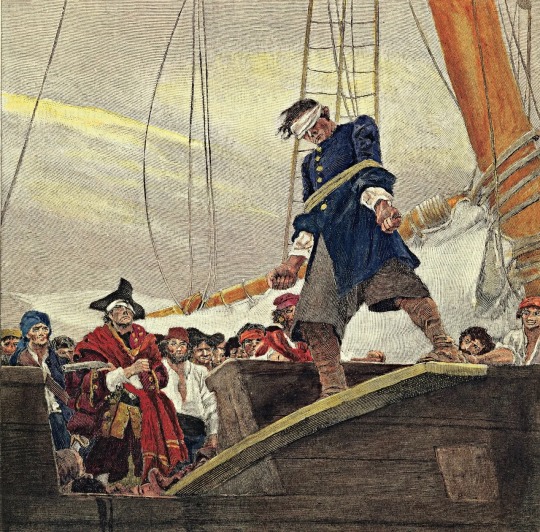
An illustration from 19th-century artist Howard Pyle depicts a man being forced to walk the plank. Although there is no record of this type of punishment, it remains popular in pirate mythology. Photograph By Image Courtesy of Bridgeman Images
Say “pirate,” and people envision grizzled men with eye patches, parrots, and treasure maps. They picture buccaneers forcing their victims to walk the plank, and crying “Shiver me timbers” as they fly the Jolly Roger flag. It turns out, many of these stereotypes are not true. Pirates have been around for nearly as long as people have sailed the world’s waters, and, in fact, still exist. It’s just how they’ve been depicted that’s often misleading. So where did these misinterpretations come from?

A replica pirate ship cruising the Caribbean Sea near the Dominican Republic. Photograph By Thomas Grau, Alamy Stock Photo
Pirate Fashion
Pirates are commonly portrayed wearing colourful attire. He may sport as a loose-fitting shirt with a bandana around his head, a scarf around his waist, ripped pants, wearing tattered boots, like Captain Jack Sparrow from the Pirates of the Caribbean film series. Or he may appear a bit foppish, much like Stede Bonnet, the "gentleman pirate" in the 2022 series Our Flag Means Death.
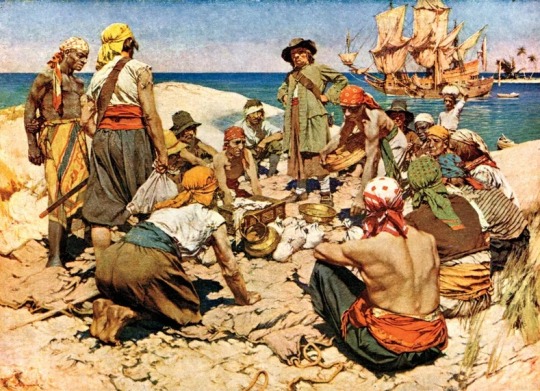
Common pop culture depictions of pirate garb, as shown here in this early 20th century artwork, are often based on fanciful descriptions of their attire and language. Photograph By Image Courtesy of Bridgeman Images
Unfortunately, these looks are just not true. Much of this ostentation came from American artist Howard Pyle, who took his inspiration from Spanish bandits of the late 19th century. Sailors in the 18th century, pirates included, wore things such as loose pants cut off at the knee and thigh-length blouses.
Prosthetic limbs are another common pirate trait. It’s true some pirates had a wooden leg or hook hand, though it probably wasn’t the norm. More often than not, amputations at sea were likely a death sentence. While ships carried medicine chests, and medical care was often meted out by someone on the crew, infection and blood loss could lead to death. Even if a pirate survived an amputation, his ability to fight would be limited. But losing a limb didn’t mean one could not continue on the ship; the person might serve the crew, for instance, as a cook.
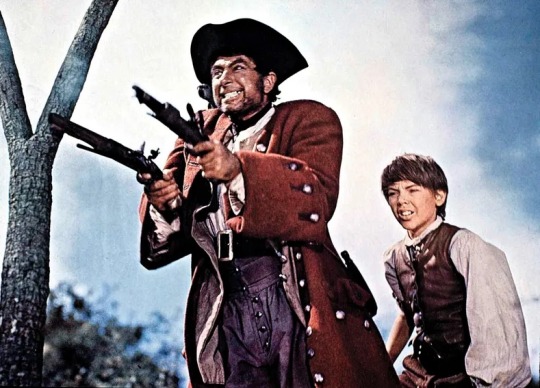
Many pirate clichés stem from the 1950 film 'Treasure Island,' featuring Robert Newton as the fictional pirate Long John Silver. Photograph By United Archives GMBH, Alamy Stock Photo
Pirate Talk
Common pirate phrases—such as Arrrrr me mateys!” and “Shiver me timbers!”—are common in pirate movies and pop culture. But they’re not legitimate things a pirate would actually have said. Robert Louis Stevenson imagined some of them for his 1883 novel Treasure Island, published more than 150 years after the “golden age” of piracy.
The trope of talking like a pirate is mostly a product of 20th-century Hollywood. In particular, British actor Robert Newton, who played both Blackbeard and Long John Silver. His portrayal of the fictional captain in the 1950s rendition of Treasure Island used an exaggeration of his own West Country accent and would define the sound of a pirate's accent. His portrayal also popularised many of the sayings associated with pirates today. In reality, pirates most probably spoke in a manner similar to all sailors of the time.
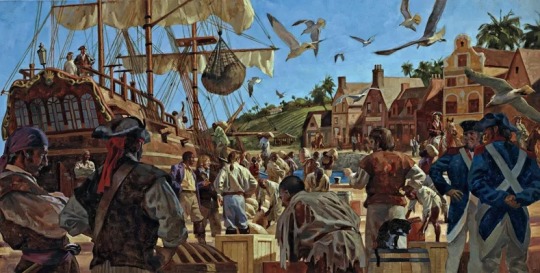
An artist imagines the often-willing markets pirates found throughout the Atlantic world for their stolen loot. Transatlantic trade was critical for the success of European colonies. Photograph By Gregory Manchess
Treasure, Buried or Otherwise
Captain Kidd may have buried his treasure, but that was a rare exception for most pirates. Typically, they spent their ill-gotten gains on women and alcohol at pirate-friendly ports as quickly as they could. Burying treasure would be dangerous due to shifting sands and tides, so one might easily lose their treasure. And there was a distinct lack of trust, not knowing if others might deceptively go back to dig up the treasure on their own.
Also, much of the loot pirates collected was not in the form of silver or gold. Such treasure would have been difficult to come by. The more common "booty" would have been whatever goods or commodities they could get their hands on, including timber, furs, silks, cotton, spices, and medical supplies. They also loaded up on items to perform necessary repairs on their ships, including cable, rigging, and sails.

Top Left: A gold bar and coins recovered from the Spanish galleon 'Las Maravillas' that wrecked in 1656 near the Bahamas. Photograph By Jeff Rotman, Nature Picture Library, Alamy Stock Photo Top Right: Prized Spanish coins, or pieces of eight, recovered from the wreck of the 'Whydah Gally'. Photograph By Zuma Press Inc., Alamy Stock Photo Bottom: Wooden treasure chests were typically studded with metal to reinforce them. Photograph By Andyroland, IStock, Getty Images
Pirate Codes
There is evidence that many pirate crews adopted a code of honour or articles of agreement, mostly to keep order on board the ship. These codes dealt with everything from how to divvy up loot, to what happened to pirates if they became injured in the line of duty, to how bad behaviour would be dealt with, to how prisoners would be treated. Some pirate articles have survived to this day, including the code of Englishman George Lowther and his crew, which, for example, compensated a person who lost a limb during a skirmish.

The 1724 articles of Captain John Phillips of the 'Revenge' discuss matters such as theft on board the ship and compensation for limbs lost during battle. Photograph By British Library Board. All Rights Reserved, Bridgeman Images
If a pirate violated the code, it is unlikely they were made to "walk the plank." Little to no historical evidence exists to support that practice, which was largely pulled from fiction, including Treasure Island. If victims were punished in some way, it was typically via keelhauling. Keelhauling was arguably a more hideous fate that involved an individual being tied to a rope and dragged under the ship. Victims of keelhauling either died by bleeding out from injuries inflicted by barnacles on the hull of the ship or by drowning. Other forms of punishment ranged from being thrown overboard to being lashed to being marooned on a desert isle.
Pirate Ships 🛳️ 🚢
Most pirates did not sail Spanish galleons, or even the frigates such as Captain Jack Sparrow’s Black Pearl. They favoured small, more manoeuvrable vessels, which allowed easy escape from larger warships that chased them. During the 16th and 17th centuries, sloops were the most common choice for pirates. They were quick and had a shallow draft, making easier escape into shallow waters. Schooners were another favourite of pirates. Similar to sloops, schooners were fast, simple to manoeuvre, and could easily hide in estuaries because of their shallow draft.

Top: A replica of the 17th-century Spanish galleon 'Neptune'. Photograph By Volodymyr Dvornyk, Shutterstock Middle: A crew raises the anchor from what is believed to be the remains of the pirate Blackbeard’s flagship, 'Queen Anne’s Revenge.' It was discovered in Beaufort Inlet, in Carteret County, North Carolina. Photograph By AP Photo, Robert Willett, The News & Observer
Bottom Left: The National Museum of the Royal Navy in Hampshire, England, displays a Jolly Roger that once belonged to Admiral Richard Curry, who seized it from pirates off the North African coast in 1790. Photograph By Andrew Matthews, Getty Images Bottom Right: Coves, such as this one near Bridgetown, Barbados, would have made perfect hideouts for pirates. Photograph By Fabio Mauri, Eyeem, Getty Images
And, despite popular myth, most pirates did not fly the famous Jolly Roger—a skull and crossbones symbol on a black flag. Some flew a black flag, which meant the pirate was willing to give quarter, while a red flag meant blood and certain death. Blackbeard’s flag showed a skeleton holding a spear pointing at a bleeding heart. Pirate crews also often held the flags of several different nations so they could raise a particular flag to signal being “friendly” to a passing ship, only to raise their pirate flag once they were in close enough range to attack said vessel.
Pirate Fights
One thing that most of the pop culture depictions of pirates got somewhat right is that they liked versatile weapons. Cutlasses, short swords with a slightly curved blade, could be used to effectively fight in the confined areas of a ship and could also be used to butcher meat.

Top: Bar shot were common tools for pirates, who used them at close range to destroy the rigging and sails of enemy ships. Due to the weights on either end of the bars, they would spin uncontrollably after being fired from a cannon. Bottom: This musket’s barrel and stock were cut down, likely so a pirate could more easily use it in close combat. Photographs By Kenneth Garrett
Pirates also enjoyed using a gun known as a blunderbuss. It had a distinct flared muzzle that sprayed small lead balls at intended victims. Cannons were also common onboard pirate ships. They could be loaded with chain shot (two cannonballs chained together), grapeshot (small cannonballs), or basic cannonballs. Their targets often didn’t stand a chance.
While books, movies, and popular culture may have taken liberty with descriptions of pirates through the ages, these pillagers have terrorised the seas for more than 2,000 years in one form or another, plundering victims and striking fear into their hearts. The most recent pirates work off the coasts of Somalia and Malaysia, looking far different from the “golden age” of piracy depictions. But one thing remains true: They are just as intimidating.

The 18th-century painting 'Anne Bonny, Female Pirate' by Fortunino Matania depicts Anne Bonny and an accomplice taking two sailors prisoner. Photograph By Image Courtesy of Historia, Shutterstock
#Culture | History#Pirate Portrayals#Blackbeard | Captain Kidd#Fantasy | Fact#Pirate Mythology#Pirate Ship 🛳️ 🚢#Pirate Garb#Fanciful | Descriptions#Attire Language#Treasure Island#Transatlantic Trade#European Colonies#Bahamas 🇧🇸
12 notes
·
View notes
Text



Life Is But A Dream 🩵
#i dont take pictures of myself that much#first vacay last year#napqueenkae#black tumblr#black women#self love#beach#beach view#Bahamas 🇧🇸#travel photography#photooftheday#photography#views#adventures#black women in femininity#black women in leisure#sunset#island view
48 notes
·
View notes
Text
HAPPYY INDEPENDENCE BAHAMAS !!!!! 🇧🇸👯♀️🎉🫶🏽
17 notes
·
View notes
Text
The Bahamas 🇧🇸
The Bahamas is a gorgeous and vibrant Caribbean country, and there are many things to do there.
One of their most famous tourist attractions is the island of swimming pigs, where you can see the little pink animals take to the seas 🌊
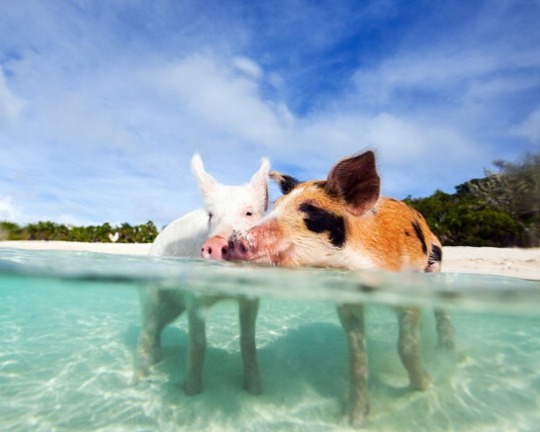
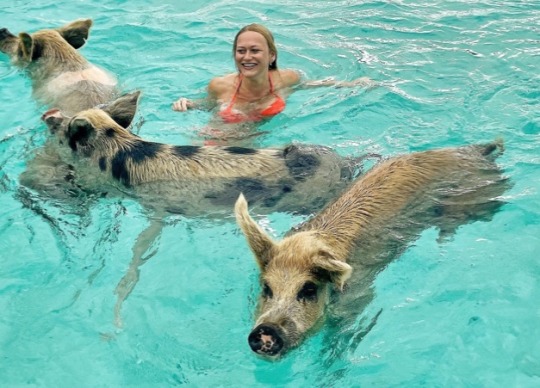
But Bahamians are probably sick of hearing about the pigs, when they have so many wonderful cultural events to offer too. For example, like their Caribbean cousins (Belize, Jamaica and others), every year the “Junkanoo” event happens.
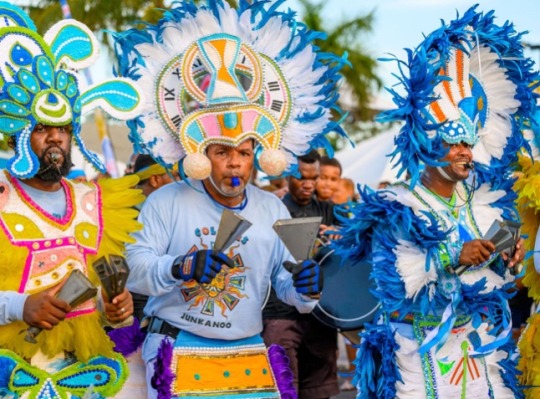
It’s sort of like a huge festival. In the weeks leading up to it, Bahamians participating will craft spectacular costumes, sometimes themed after animals or colours... or just to be as elaborately decorated as possible!
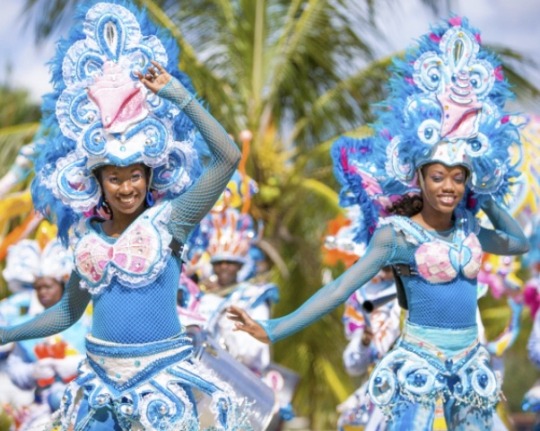
With roots in West African traditions, this amazing staple of Caribbean culture is a fascinating one. Here, you will also hear some wonderful local musicians performing and dancers taking to the streets!

(Don’t worry Jamaica, I’ll make a separate post about your Junkanoo event and what makes it unique!)
Finally, the biggest underwater sculpture can also be found in this colourful country.
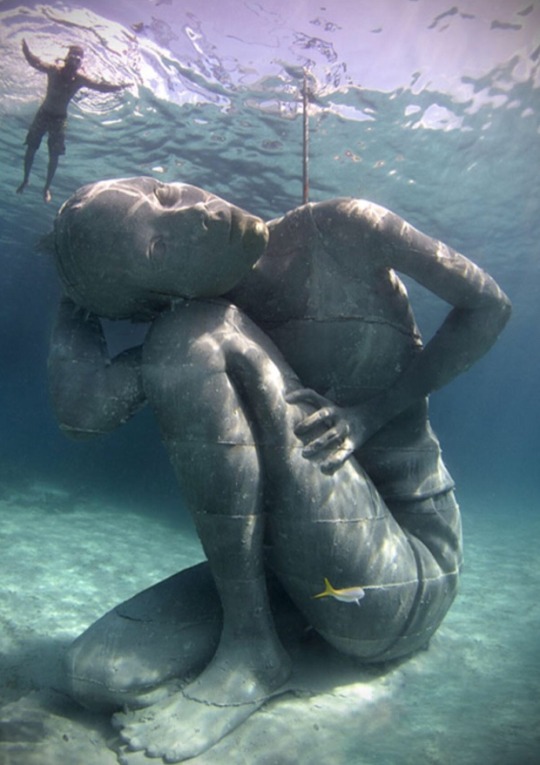
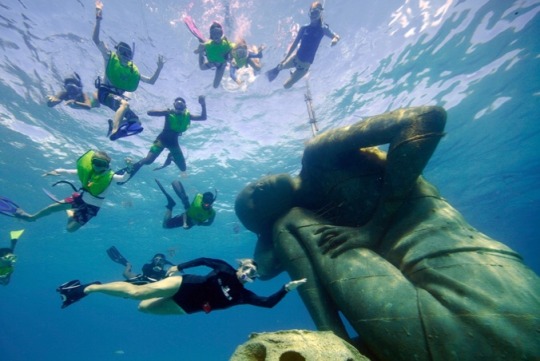
Clearly, the Bahamas is so much more than a simple island paradise 🌴
#the Bahamas#🇧🇸#Bahamas#bahamian#the caribbean#caribbean#North America#fun facts#tourism#travelling#island#junkanoo#culture facts
3 notes
·
View notes
Text
Tags of all the countries
#[🇦🇫 Afghanistan asks]#[🇦🇱 Albania asks]#[🇩🇿 Algeria asks]#[🇦🇩 Andorra asks]#[🇦🇴 Angola asks]#[🇦🇶 Antarctica asks]#[🇦🇬 Antigua and Barbuda asks]#[🇦🇷 Argentina asks]#[🇦🇲 Armenia asks]#[🇦🇺 Australia asks]#[🇦🇹 Austria asks]#[🇦🇿 Azerbaijan asks]#[🇧🇸 Bahamas asks]#[🇧🇭 Bahrain asks]#[🇧🇩 Bangladesh asks]#[🇧🇧 Barbados asks]#[🇧🇾 Belarus asks]#[🇧🇪 Belgium asks]#[🇧🇿 Belize asks]#[🇧🇯 Benin asks]#[🇧🇹 Bhutan asks]#[🇧🇴 Bolivia asks]#[🇧🇦 Bosnia and Herzegovina asks]#[🇧🇼 Botswana asks]#[🇧🇷 Brazil asks]#[🇧🇳 Brunei asks]#[🇧🇬 Bulgaria asks]#[🇧🇫 Burkina Faso asks]#[🇧🇮 Burundi asks]#[AND MANY MORE MFING COUNTRIES]
4 notes
·
View notes
Text
2 notes
·
View notes
Photo

If you love PRAYER and PRAYING, please do me a favor and hit the link in my bio and then hit the subscribe button! 🙏🏾😊 If you do NOT like prayer, you don’t know how to pray, you don’t like Christians, or you think prayer is boring (I did too) please *still* hit the link in my bio and the subscribe button! 😊 And if yuh is ah TRINI🇹🇹 or from anywhere in de Caribbean click the link in bio and hit the subscribe button …. then go to ‘TRINI prayer bites.’ Those are prayers prayed in the (old time and hardly used anymore) Trinidad/Tobago dialect. LMK if you could understand de twang🤪😜😝🇹🇹 THANK YOU! #shermajacqueline #theblackadvantage #trinidadandtobago🇹🇹 #grenada🇬🇩 #jamaica🇯🇲 #bahamas🇧🇸 stvincent🇻🇨 #antigua🇦🇬 #caribbeanislands 🌴🏝 https://www.instagram.com/p/CjGU10HuCCI/?igshid=NGJjMDIxMWI=
#shermajacqueline#theblackadvantage#trinidadandtobago🇹🇹#grenada🇬🇩#jamaica🇯🇲#bahamas🇧🇸#antigua🇦🇬#caribbeanislands
2 notes
·
View notes
Text






A few days ago in Exuma #Bahamas 🇧🇸 #bartender
NOT #August 29, 2024
#rum #speaks like Captain Jack Sparrow
#Bahamas#bahamas 🇧🇸#late August 2024#August 2024#2024#bartender#rum#Johnny speaks like Captain Jack Sparrow#on summer vacation#vacation
2 notes
·
View notes
Text
The Notorious Pirate King Who Vanished With the Riches of a Mughal Treasure Ship
In the late 17th century, Henry Avery—the subject of the first global manhunt—bribed his way into the Bahamas
— Sean Kingsley and Rex Cowan | April 2, 2024
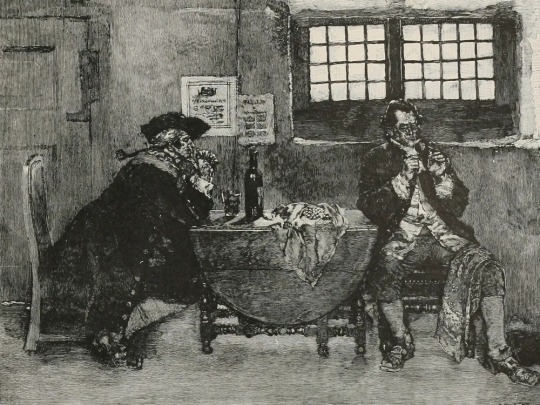
Some said the pirate king went to ground in London or Scotland, others that he died penniless and was buried in an unmarked grave in Devon. Or was he sipping fine French wine in the hills above Marseille? Public domain via Wikimedia Commons
Henry Avery stealthily steered past Hog Island. In the English-controlled waters of the Bahamas, his crew was under strict orders to call him Captain Henry Bridgeman. The Fancy’s gold, silver and diamonds, plundered off the coast of India from a Mughal emperor’s treasure ship, the Gunsway (or Ganj-i Sawa’i), were tucked away under false floorboards in Avery’s cabin.
Palm trees bowed toward the battered ship and the newly nicknamed pirate king. Sea oats shimmered in the early morning breeze. With blue skies and light winds, it was going to be a beautiful day. The final leg into Nassau’s calm harbor was tricky. It took a skillful old hand to squeeze through the narrow channel. On either side, shifting sandbars waited to chew up and spit out wayward traders, nationality be damned. One false move, and all the months of jeopardy would be for nothing.
It was April 1, 1696—a day to make fools of the smartest of men. Luckily, Avery knew all about the island of New Providence. He understood what made the darkest of souls tick and was skilled at turning any man to his way of thinking.
New Providence was the perfect place to make landfall. It straddled the ancient sea lanes between the Province of Carolina and Jamaica (both British colonies) and the Caribbean Sea to the south. Havana was just a three days’ hop away. From Nassau, would-be pirates could watch the panorama of New World trade gliding by.
At 28 miles long and 11 miles wide, New Providence, the heart of the islands of the Bahamas, was big enough to lay low. Best of all, it had a reputation for aiding and abetting villains. The pirate mantra “Ask me no questions and I’ll tell you no lies” could have been invented for this dodgy outback.
Avery knew the bad folk of New Providence were as rotten as a shipwrecked barrel of apples. In fact, he was banking on it. The Bahamas’ motley mob included experts in fishing wrecks sunk along the Florida coast, locals who rushed to salvage Spanish, British, Dutch and French valuables lost to hurricanes and storms. It was easy and generous work that beat breaking one’s back tilling the hateful earth.
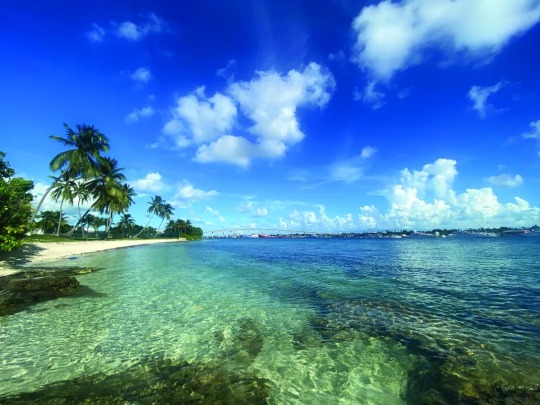
A view of New Providence today. Sean Kingsley
The New Providence of 1696 was a long way from becoming the world’s wickedest Republic of Pirates, its chaotic lanes home to such notorious figures as Benjamin Hornigold, Blackbeard, Calico Jack Rackham, Charles Vane, Mary Read and Anne Bonny. By the fall of 1717, as many as 800 pirates would rendezvous in New Providence to divide spoils, fence looted cargo and party away their ill-gotten gains. At times, the lair swelled to a thousand cutthroats, commanded by a changing “who’s who” of crazed leaders. Brawn and brains were respected, but strength always won control. All pirate captains understood that on these shores, the “strongest man carries the day.”
Avery had a knack for reading places and people like others read books. As an ex-Royal Navy sailor who became the skipper of the meanest pirate ship on the high seas, he needed to decide in a blink of an eye who he could trust and what gossip peddled in some mosquito-infested East African tavern was hogwash. His gut rarely let him down.
Peering through his eyepiece, Long Ben—as Avery’s crew called him on deck—made out a few dozen makeshift huts inland of the trees screening the coast. He spied what was little more than a shantytown on the make. Locals were gathering salt to hawk to passing cod-fishing traders from Newfoundland and New England, who used it to stop shipboard meat from rotting too quickly. The New Providence of 1700, with 160 houses and a church, was still a few years away. Up the slope, piles of masonry were being cut and plastered into foundation trenches to build the town’s desperately needed Fort Nassau, paid for by port customs’ profits. Equipped with 28 cannons, its gates would only open in February 1697.
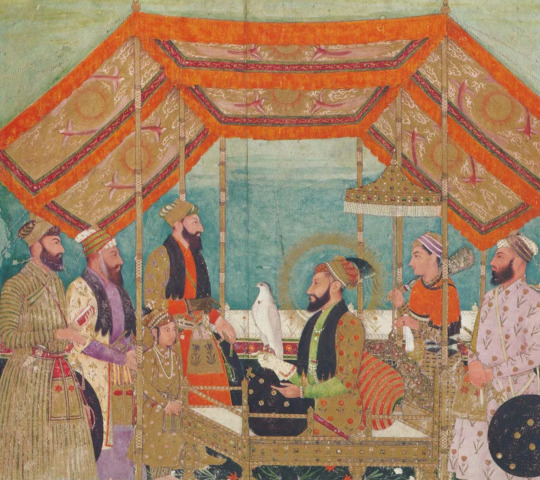
Aurangzeb sits on a golden throne while holding a hawk. Public domain via Wikimedia Commons
Avery, the man who put the world’s economy on a knife-edge by plundering the flagship of Aurangzeb of India, possibly the richest person in the world, drew deeply on a pipe filled with Virginia’s finest tobacco. The gray smoke billowed into the charred rafters of the Wheel of Fortune inn and out the chimney stack to freedom. Avery was thinking about liberty, too. The hard knocks of family life as a child, and betrayal by the Royal Navy, had shattered any dreams Avery once cherished. These days, he was a cold-blooded hyper-realist.
Avery had just become the first pirate commander to chase down a Mughal emperor’s treasure ship. Overnight, he and his crew were millionaires, celebrities, notorious. The pirate would enjoy the moment before deciding his fate. There was much to be said for staying in the Americas—the laid-back lifestyle, the tropical mood, the sun on your back standing next to the tiller.
But he viewed the people as vermin. And the culture. What culture? Avery had rolled out his deadly plans with all the guile and strategic know-how that his navy training had taught him. His scheming wasn’t over yet. Ever since he’d stripped the stricken Gunsway off the coast of Surat, Avery had been thinking about payback: to the family of his old governor who cheated him out of his fortune, to his country for betraying his men in A Coruña, Spain, and pushing him to mutiny.
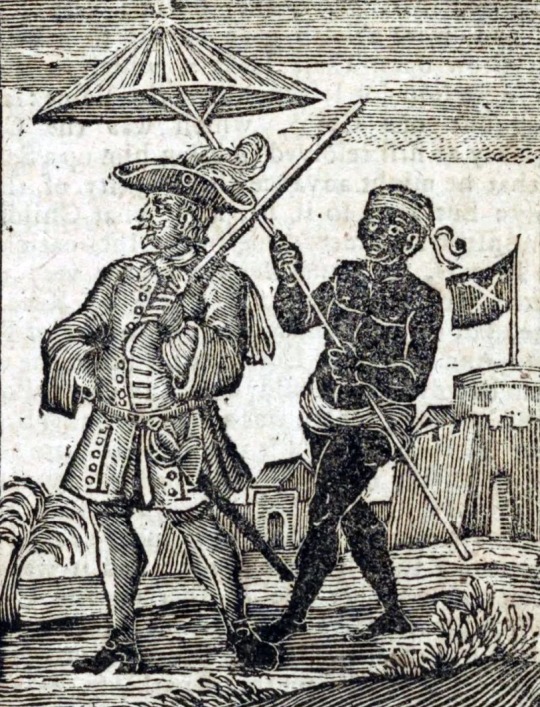
An 18th-century illustration of Henry Avery. Public domain via the Internet Archive
Avery wondered how much power a man with a fortune like his could buy. To him, power meant returning home to England, the land of his fathers, and Bideford in Devon, a town thick with bittersweet memories. Yet again, he would prove the world wrong.
The nectar of the pirate’s sweet tobacco was a welcome respite from the anarchy of New Providence. The town had no proper governing body and little order. Human waste and garbage choked the alleys. Outside the tavern window, Avery saw the bones of repairs, abandoned hulls and burned-out prizes littering the shores. The island’s wide, open beaches were perfect for careening hulls, beaching ships and listing them to one side to scrape off the foul barnacles and shipworms that infest the tropical Caribbean.
Avery sipped his glass of wine. His plan had gone just how he’d hoped. On paper, Nicholas Trott, governor of New Providence, was an upstanding pillar of the community. Avery knew better. He had gained intelligence about the top dog’s true nature.
Trott liked to frog-march around the harbor with his crisp leather ledger tucked under his arm, all-important. But make no bones about it: Avery knew that the governor was a snake in the grass without a shred of experience serving king and country. As Richard Coote, the powerful First Earl of Bellomont and the governor of Massachusetts Bay, warned London in 1699, Trott was “the greatest pirate-broker that ever was in America.”

An 18th-century depiction of Avery, with the Fancy shown in the background. Public domain via Wikimedia Commons
The king of the pirates would play nice, try diplomacy. If that failed, he would have no qualms strangling Trott’s neck until his eyes popped out.
To Avery, dropping into Nassau and dealing with Trott held no big risk of being slung into a dungeon for piracy. Trott was no gamble. Here was a man who could be bought, greedy to top up his demeaning £30 annual salary. Money meant power. Power meant status. The question was: What was Trott’s price?
To be sure his reckoning was sound, that morning Avery had moored the Fancy off the island’s coast and sent three of his men to New Providence with a personal note for the governor. Avery, in the guise of Bridgeman, pretended his ship was a slaver bending the rules as so many did, trafficking enslaved Africans and elephant tusks without the seal of approval from the Royal African Company, which owned the British crown’s monopoly over the trade.
The Fancy’s tall tale claimed the crew needed permission to take on provisions before going straight. Avery sent a purse stuffed with pieces of eight to make sure the governor got the point. In return for the courtesy of letting him land, Trott could expect a tip of 20 silver pieces of eight and 2 pieces of gold from each crew member. Avery would pay double as captain.
Trott’s fawning reply played the innocent to perfection. With a nudge and a wink, he embraced Avery’s crew as “soldiers of fortune” who “had done no Christian nation any damage and were the king’s subjects.” Trott sent the trio back to the Fancy, weighed down with a cask of wine, a hogshead of beer and a cask of sugar, as well as permission for Avery to land at his leisure.
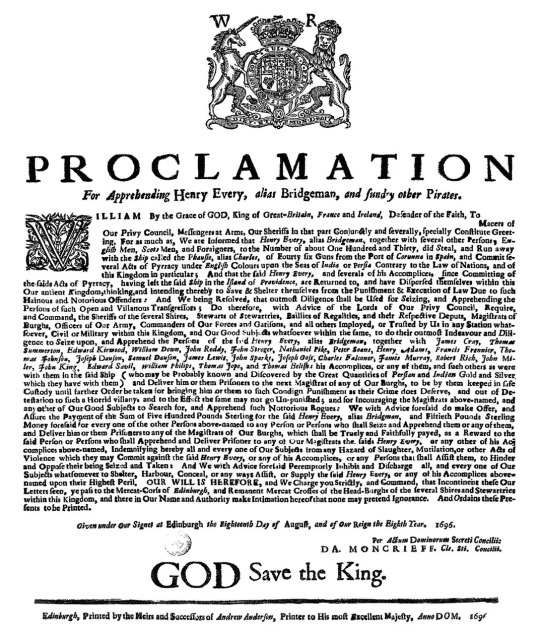
A proclamation for Avery's apprehension. Public domain via Wikimedia Commons
Avery knew full well that the clincher for Trott would be the offer of the added tip of the Fancy, with its 46 guns and 100 barrels of gunpowder. French forces had recently seized the island of Exuma, 140 miles away. Rumor had it they were heading for Nassau with three warships and 320 men. Fear filled the air. Nassau had no men-of-war ships, and Trott’s stone fort was still a building site. But with dozens of guns lining the shore, the French would think twice about raping and pillaging.
By the time Trott grounded the Fancy on Hog Island and started stripping its bones bare, he had raked in a small fortune. The strong man was rich and had hardly needed to lift a finger.
As the weeks unfolded, however, only one winner emerged. Avery’s crew scattered. The pirates were spotted openly walking the streets of Philadelphia, thick as thieves with judges and sheriffs, the Gunsway’s riches buying influence and power. Others preferred spending their loot in New York, Connecticut and New Jersey. A few of the crew stayed local. Two men settled in Bermuda. Some seven of Avery’s crew married in New Providence and bribed Trott to sign royal pardons. Most of the pirates went straight.
All the while, the rumor mill churned alarmingly. The wrecking ball of Avery’s recent past was catching up with him. East India Company agents were seeking the pirate king in Bombay and Calcutta. The Royal Navy was thinking about dispatching battleships to hunt for the Fancy in the waters between West Africa, Madagascar and Arabia. Bounty hunters crisscrossed the world from the Indian Ocean to the English Channel. Avery was the most wanted man in the world. The world’s first global manhunt was underway.
As the number of guns for hire searching for the pirate grew, proclamations for his apprehension flew from port to port. The legend of Avery the pirate king echoed through the world’s taverns, smoky coffee shops and fashionable ladies’ salons. Avery had shown the world how to unpick the richest treasure box on earth and revealed the wealth waiting to be stolen from heathens’ pockets.

A 19th-century illustration of Captain William Kidd. Public domain via Wikimedia Commons
Every pirate wanted to match Avery’s strike. The golden age of piracy had begun. Men of fortune flooded the Red Sea and the Indian Ocean. Captain William Kidd, the Scottish privateer sent on a mission in September 1696 to hunt down and destroy pirates, instead joined the free-for-all by seizing the Quedagh Merchant. Four years later, Kidd ended up dangling from the end of a rope at London’s Execution Dock.
Avery, for his part, wanted to keep his precious head on his neck. So far, his plan had worked like a dream. Trott was eating out of the palm of his hand. Avery was now the strongest man in Nassau.
The burning question in need of an urgent resolution was how to slip through the closing net. Should the pirate king hide out in the Caribbean or head to England for payback? Should he live a life of luxury in the West Indies or risk it all and be damned for retribution on far more dangerous British soil?
Within a few months of his arrival in the Bahamas, Avery was back on the waves. He was seen landing in Ireland in June 1696. That November, five of his crew members were hanged in England. But Avery himself escaped punishment. Some said the pirate king went to ground in London or Scotland, others that he died penniless and was buried in an unmarked grave in Devon. Or was he sipping fine French wine in the hills above Marseille?
Most ballads and books were convinced that Avery vanished in Madagascar, home to a supposed utopian pirate colony called Libertatia. But one fact was certain: When the Lords Justices of England offered the “assurance of our most gracious pardon” to all pirates in December 1698, only Kidd and Avery were excluded by name. The pirate king was still wanted, dead or alive.
#Smithsonian Mag#History#Notorious Pirate King#Mughal Treasure | Ship 🚢#Henry Avery#Bahamas 🇧🇸#Sean Kingsley | Rex Cowan
3 notes
·
View notes
Photo

𝘽𝙀𝙎𝙏 𝙎𝙋𝙍𝙄𝙉𝙂 𝘽𝙍𝙀𝘼𝙆 𝙀𝙑𝙀𝙍! #spring #springtime #springbreak #springbreakers #springbreak2023 #bahamas🇧🇸 #bahamas #itsbetterinthebahamas #thebahamas #sunday #sundayfunday #weekendvibes #sundayvibes #happysunday #sundaymood☀️ #ai #generativeart #aiartwork #midjourney #aiartcommunity #aigeneratedart #AIgenerated (at Bahamas) https://www.instagram.com/p/Cp-SOcDOhkd/?igshid=NGJjMDIxMWI=
#spring#springtime#springbreak#springbreakers#springbreak2023#bahamas🇧🇸#bahamas#itsbetterinthebahamas#thebahamas#sunday#sundayfunday#weekendvibes#sundayvibes#happysunday#sundaymood☀️#ai#generativeart#aiartwork#midjourney#aiartcommunity#aigeneratedart#aigenerated
1 note
·
View note
Photo

Famous 1720 Bahamas Pirate "Marcus no beard" terrorised the Sea like few pirates of his time forcing pirates like Edward Teach, known as “Blackbeard”, along with Sam Bellamy and Stede Bonnet to run away as soon as they would hear that "Marcus no beard" was on the Island... 😅 #bahamas🇧🇸 #bahamaspirates⚔️ #enjoybahamas🇧🇸😍☀️ #carpediem #marcusberesford #living_destinations (presso Bahamas) https://www.instagram.com/p/Cn2_KFPrR2u/?igshid=NGJjMDIxMWI=
0 notes
Text

Worn on March 26,2022- departure from the Bahamas
Rude comments aren’t allowed and you will be blocked
#picture#my edit#every brand worn#kate’s fashion#alessandra rich#bahamas 🇧🇸 royal tour 2022#2022 outfits#dresses 👗
0 notes



















